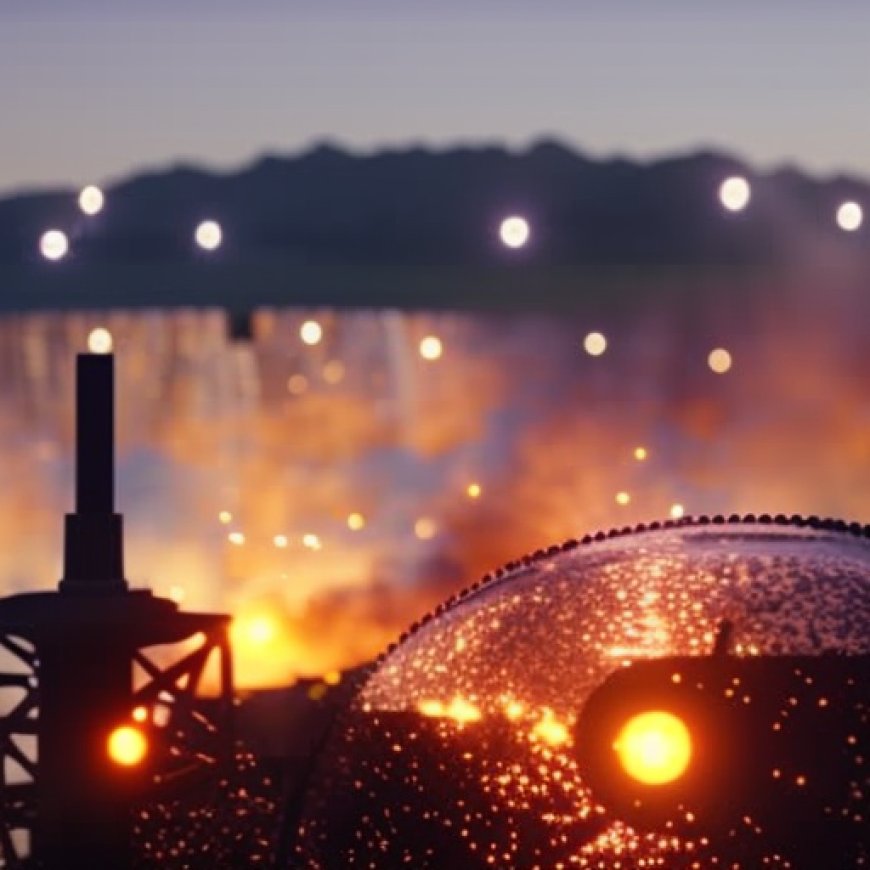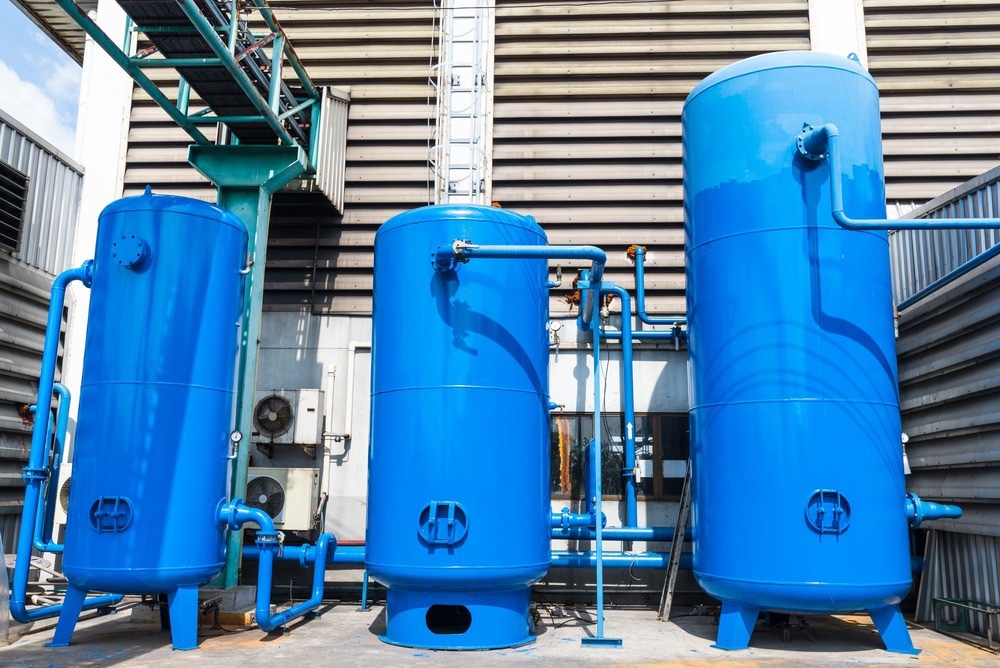How Does Compressed Air Energy Storage Work?
How Does Compressed Air Energy Storage Work? AZoM


The Growth of Renewable Power Generation and the Role of Compressed Air Energy Storage (CAES)
The growth of renewable power generation is experiencing a remarkable surge worldwide. According to the U.S. Energy Information Administration (EIA), it is projected that by 2050, the share of wind and solar in the U.S. power-generation mix will reach 38 percent, which is twice the proportion recorded in 2019. The incorporation of Compressed Air Energy Storage (CAES) into renewable energy systems offers various economic, technical, and environmental advantages.

What is Compressed Air Energy Storage?
By 2030, it is anticipated that renewable energy sources will account for 36 percent of global energy production. Energy storage systems will be instrumental in attaining this objective. Mechanical storage systems stand out among the available energy storage methods due to their reduced investment expenses, prolonged lifetimes, and increased power/energy ratings. Notably, commercialized large-scale Compressed Air Energy Storage (CAES) facilities have arisen as a prominent energy storage solution.
Incorporating CAES technology into renewable energy systems can help achieve the Sustainable Development Goals (SDGs) outlined by the United Nations. These goals include affordable and clean energy (SDG 7), industry, innovation, and infrastructure (SDG 9), and climate action (SDG 13).
How Does Compressed Air Energy Storage Work?
The CAES system follows a conventional three-phase model of a gas turbine, encompassing charging, storing, and discharging. During the charging phase, CAES uses off-peak and cost-effective electricity to compress ambient air, which is then stored in a dedicated pressurized reservoir. When energy demand is high, the stored compressed air is released, expanded, and passed through a turbine to generate electricity.
Traditional Compressed Air Energy Storage System Configurations
CAES technology encompasses different types, including adiabatic systems and diabatic systems. The key distinction between these configurations lies in how they handle the heat generated during the compression process.
- Diabatic CAES systems: These are the first-generation technology where ambient air is compressed using a compressor train. The compression process generates waste heat, which is dissipated to the surrounding environment through intercoolers. During the discharge phase, fuel is combusted to heat the air before its expansion in the turbines, enabling electricity generation during peak demand periods.
- Adiabatic CAES systems: Developed to address the limitations of diabatic CAES, these systems focus on effectively capturing and storing the waste heat generated during compression. The stored heat is then recycled to elevate the turbine inlet temperature of the compressed air during the discharge phase. Adiabatic CAES aims to reduce or eliminate reliance on fossil fuels, offering a more sustainable energy storage solution.
Recent Developments in Novel Configurations of CAES
In addition to adiabatic and diabatic configurations, two other types of CAES systems have been proposed: isothermal CAES (I-CAES) and supercritical CAES. I-CAES aims to maintain stable compression and expansion temperatures of the compressed air during the charging and discharging processes, respectively. Supercritical CAES involves compressing the air to a supercritical thermodynamic state, recovering and storing the waste heat generated during compression, and utilizing liquefied air for electricity generation.
Components and Operational Necessities
- Motor/generator with pulleys on both ends
- Multistage air compressors with intercoolers and aftercoolers
- Control system for an expander train
- Accessories (fuel storage and management, refrigeration systems, mechanical systems, power systems, and heat exchangers)
- Storage of pressurized air underground or aboveground
Advantages of Compressed Air Energy Storage
- Improves high-demand preservation and decreases the electrical grid’s burden
- Reduces reliance on the electrical infrastructure, decreasing energy costs and maintenance costs
- Stores energy for several hours to days, assuring a consistent power supply during periods of high demand or when intermittent resources are not producing
- Enhances power grid stability during periods of excessive electrical demand
- Requires relatively little upkeep compared to other methods
Limitations and Challenges
Despite its advantages, compressed air energy storage faces challenges and limitations. The scarcity of appropriate geological formations for underground caverns may hinder its extensive application. Additionally, energy losses due to thermal dispersion during the compression and expansion processes reduce overall efficiency.
Market Assessment
The future market potential for compressed air energy storage (CAES) systems is substantial. The global compressed air energy storage market was worth $4 billion in 2021 and is expected to reach $31.8 billion by 2031, expanding at a compound annual growth rate (CAGR) of 23.6% from 2022 to 2031. This growth is primarily driven by the increasing influence of renewable energies.
Cost and Performance Assessment of CAES
According to calculations done by Pacific Northwest National Laboratory, a 1000MW CAES plant incurs various costs, including cavern storage, CAES capital, total installed cost, fixed O&M, and calendar life years.
|
High Estimate |
Point Estimate |
Low Estimate |
|||||||||||
|
Cavern Storage ($/kWh) |
$ 16. SDGs, Targets, and IndicatorsSDG 7: Affordable and Clean Energy
The article discusses the growth of renewable power generation, specifically wind and solar energy, and their increasing share in the U.S. power-generation mix. This aligns with SDG 7, which aims to ensure access to affordable, reliable, sustainable, and modern energy for all. The target of increasing the share of renewable energy in the global energy mix is relevant to the article’s content. The indicator mentioned in the article, the renewable energy share in the total final energy consumption, can be used to measure progress towards this target. SDG 9: Industry, Innovation, and Infrastructure
The article discusses Compressed Air Energy Storage (CAES) as an energy storage solution that offers economic, technical, and environmental advantages. This aligns with SDG 9, which aims to build resilient infrastructure, promote inclusive and sustainable industrialization, and foster innovation. The target of upgrading infrastructure and retrofitting industries to make them sustainable is relevant to the article’s content. The indicator mentioned in the article, CO2 emission per unit of value added, can be used to measure progress towards this target. SDG 13: Climate Action
The article discusses the advantages of CAES as a sustainable energy storage solution that can contribute to reducing the reliance on fossil fuels. This aligns with SDG 13, which aims to take urgent action to combat climate change and its impacts. The target of integrating climate change measures into national policies, strategies, and planning is relevant to the article’s content. The indicator mentioned in the article, the number of countries that have integrated mitigation, adaptation, impact reduction, and early warning into national policies, strategies, and planning, can be used to measure progress towards this target. Table: SDGs, Targets, and Indicators
Behold! This splendid article springs forth from the wellspring of knowledge, shaped by a wondrous proprietary AI technology that delved into a vast ocean of data, illuminating the path towards the Sustainable Development Goals. Remember that all rights are reserved by SDG Investors LLC, empowering us to champion progress together. Source: azom.com
Join us, as fellow seekers of change, on a transformative journey at https://sdgtalks.ai/welcome, where you can become a member and actively contribute to shaping a brighter future.
|








